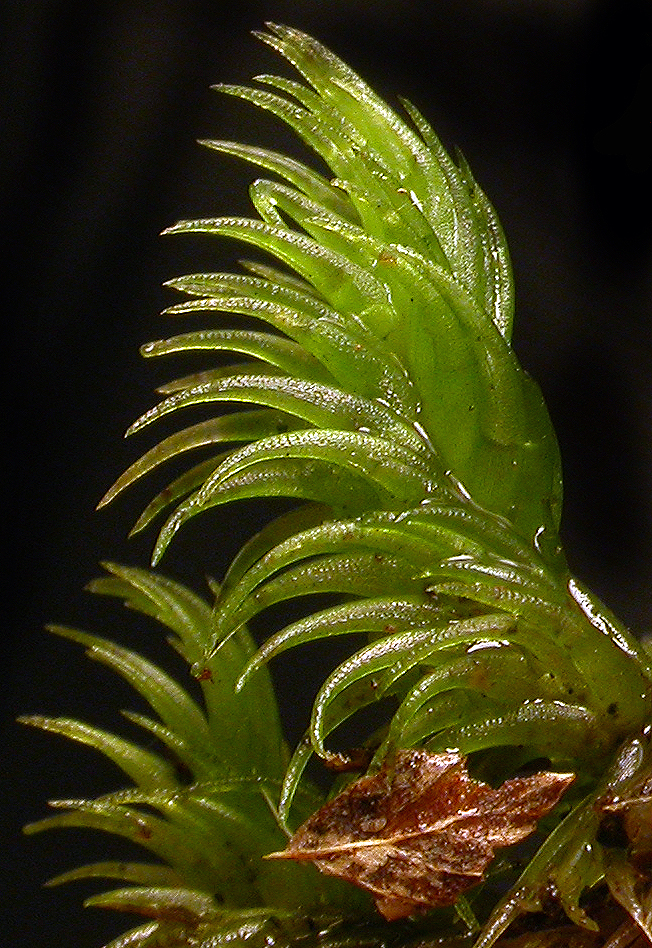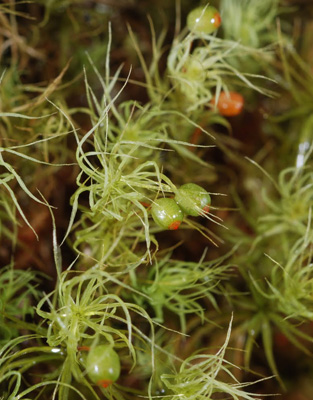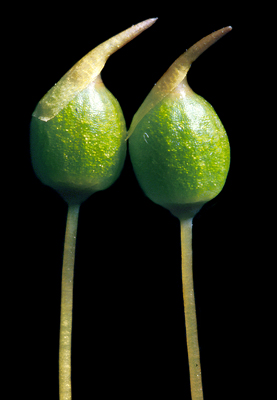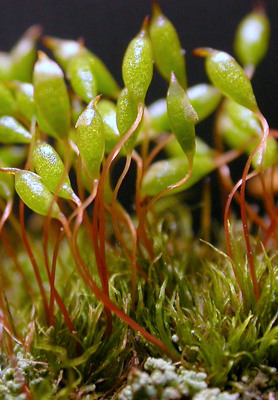
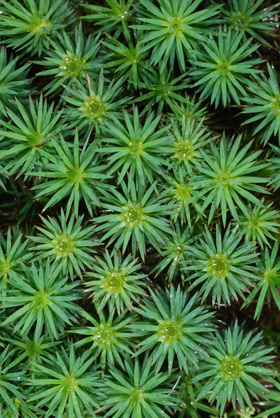
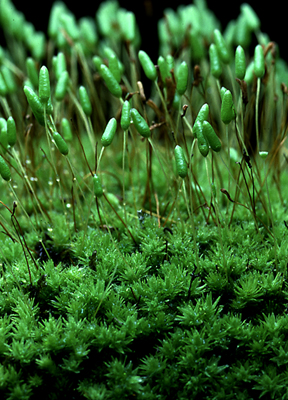
Australian Mosses Online provides authoritative taxonomic treatments of Australian moss species, genera and families to a diverse audience. It is hoped that the availability of reliable names, detailed descriptions and synonymy, identification keys, ecological information, distribution maps and illustrations will promote a greater interest in and understanding of the significance of mosses across the broad range of Australian habitats.
[Acanthorrhynchium, Acroporium, Macrohymenium, Meiotheciella, Meiothecium, Papillidiopsis, Radulina, Rhaphidorrhynchium, Sematophyllum, Trichosteleum, Warburgiella]
[Aerobryopsis, Barbella, Floribundaria, Meteoriopsis (D.Meagher), Meteorium, Papillaria]
[Anacamptodon, Fabronia, Ischyrodon]
[Hedwigia, Hedwigidium]
[Sorapilla]
[Bryobartramia]
[Viridivellus]
[Pleurophascum]
[Climacium]
[Echinodium]
[Achrophyllum, Bryobrothera, Callicostella, Calyptrochaeta, Chaetomitrium, Cyclodictyon, Daltonia, Distichophyllum, Hookeriopsis, Sauloma]
[Spiridens]
[Arthrocormus (D.G.Catcheside), Calymperes, Exostratum (D.G.Catcheside), Leucophanes (D.G.Catcheside), Mitthyridium, Octoblepharum (D.G.Catcheside), Syrrhopodon]
[Clastobryum, Isocladiella, Isopterygium (Z.Iwatsuki & H.P.Ramsay), Taxithelium, Trismegistia, Wijkia]
[Caduciella, Himantocladium, Homaliodendron, Neckera, Neckeropsis, Pinnatella, Thamnobryum, Touwia]
[Diphyscium]
[Buxbaumia]
[Plagiothecium]
[Stereophyllum]
[Encalypta]
[Braithwaitea]
[(Bescherellia), Hypnodendron, Mniodendron, Spiridens (D.G.Catcheside & D.A.Meagher)]
[Aequatoriella, Pelekium, Thuidiopsis, Thuidium]
[Entodon, Mesonodon]
[Acrocladium]
[Catagonium]
[Lepyrodon]
[Orthorrhynchium]
[Trachyphyllum]
[Camptochaete, Fallaciella, Lembophyllum, Weymouthia]
[Glyphothecium, Hampeella, Ptychomnion, Tetraphidopsis]
[Oedicladium]
[Dicranoloma, Dicranum, Holomitrium, Leucoloma, Sclerodontium]
[Macgregorella]
[Campylopus, Leucobryum]
[Goniobryum, Hymenodon, Leptotheca, Mesochaete, Pyrrhobryum, Rhizogonium]
[Gigaspermum]
[Mittenia]
[Erpodium]
[Archidium]
[Ephemerum, Nanomitriopsis]
[Bartramia (G.H.Bell), Breutelia, Conostomum, Philonotis]
[Leptobryum (H.P.Ramsay), Meesia]
[Calomnion]
[Aulacomnium]
[Leptostomum]
[Groutiella (Vitt & Ramsay), Macrocoma (Vitt & Ramsay), Macromitrium (Vitt & Ramsay), Orthotrichum (Lewinsky-Haapasaari & Ramsay), Schlotheimia (Vitt & Ramsay), Stoneobryum (Ramsay), Ulota (Ramsay), Zygodon (Lewinsky-Haapasaari & Ramsay)]
[Atrichum, Dawsonia (B.O. van Zanten), Notoligotrichum, Pogonatum, Polytrichadelphus, Polytrichastrum, Polytrichum]
[Orthodontium]
[Brachymenium, Bryum, Gemmabryum, Ochiobryum, Plagiobryum, Ptychostomum, Rhodobryum, Rosulabryum]
[Ambuchanania]
[Sphagnum]
[Tayloria]
[Cyathophorum, Hypopterygium, Lopidium]
[Andreaea]
[Powellia, Racopilum]
[Acaulon, Aloina, Chenia, Gymnostomiella (B.Goffinet*), Hennediella, Phascopsis, Pseudosymblepharis, Pterygoneurum, Splachnobryum (B.Goffinet*), Stonea, Trachycarpidium, Uleobryum; others to follow]
[Austrohondaella (Z.Iwatsuki & H.P.Ramsay), Calliergonella (N.Klazenga), Ctenidium (N.Klazenga), (Ectropothecium), Hypnum (H.Ando), Isopterygiopsis (H.P.Ramsay), Pseudohypnella (H.P.Ramsay), Pseudotaxiphyllum (H.P.Ramsay), Taxiphyllum (N.Klazenga), Trachythecium (N.Klazenga), (Vesicularia)]
[Cryphaea, Cyptodon, Dendrocryphaea, Schoenobryum]
[Forsstroemia, Leptodon]
[Orthomnion, Plagiomnium]
[(Grimmia), Racomitrium, Schistidium]
[Brachythecium, Eurhynchium, Platyhypnidium, Pseudoscleropodium, Rhynchostegium, Scleropodium, Scorpiurium]
[Anomodon, Haplohymenium, Herpetineuron]
[Entosthodon, Funaria, Goniomitrium, Physcomitrella, Physcomitrium]
[Pulchrinodus]
[Mielichhoferia, Pohlia]
[Fissidens]
* First published in Flora of Australia Volume 51 (2006)
Notification of errors and omissions, as well as updated distributions, will be gratefully received and acknowledged. In the first instance, please submit these to the Australian Biological Resources Study, who will liaise with the appropriate author. Authenticated, high-quality colour photographs of moss species and habitats relevant to completed family treatments will be especially welcome.
Australian Biological Resources Study, Canberra
abrs@environment.gov.au
July 2016
The ABRS is especially grateful to Bill Malcolm for his generosity in allowing us to use numerous plates of habit and anatomical photographs; Niels Klazenga, David Tng, Ron Oldfield and Paddy Dalton kindly provided habit photos of many species; and to Murray Fagg for photographs. In addition, this resource will benefit enormously from the inclusion of almost 200 plates of superb line-art prepared by Rod Seppelt.
The ABRS also thanks Brigitte Kuchlmayr for website design, Christy Geromboux and Greg Whitbread for technical assistance and Helen Ramsay, Scott Gilmore and Andries Touw for their careful and timely attention to editorial matters.
